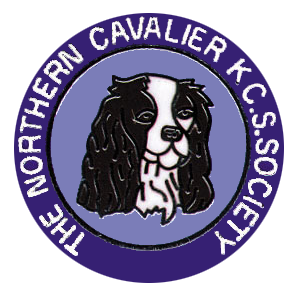 The Northern Cavalier King
The Northern Cavalier KingCharles Spaniel Society
HEALTH MATTERS
Cavaliers are generally a happy, healthy breed of dog. However, as with many other breeds, there are genetic health problems.
Cavaliers, like all other living creatures, may suffer from hereditary diseases. The main problems in Cavaliers are:-
The impression should not be given that all Cavaliers have these health conditions - they do not. Indeed many Cavaliers lead long and happy lives well in to their teens.
For more information on these please follow the links below.
Curly Coat and Dry Eye Syndrome
This is an extremely rare condition, so rare that most breeders have never seen this. Dry Eye and Curly Coat, known scientifically as congenital keratoconjunctivitis sicca and icthyosiform, affect a dogs eyes and skin. In the rare instances of dogs surviving beyond birth, affected dogs produce no tears making their eyes incredibly sore. Their skin becomes very flaky and dry, particularly around the foot, and this can make standing difficult and painful. By identifying the genetic mutations responsible for causing this condition, the Animal Health Trust has been able to develop a DNA test to identify carriers. Two "clear" dogs mated together, or a "clear" and a carrier mated together cannot produce an affected dog. So theoretically a breeder would be able to eliminate this syndrome from their bloodlines within one or two generations.
Episodic Falling
Is a syndrome of muscle stiffness or collapse that occurs in the Cavalier King Charles Spaniel. It has been in evidence in the Cavalier for over forty years and the number of reported cases has shown a dramatic increase over the last few years. The more correct medical terminology to describe the syndrome is that of ‘Paroxysmal Exercise-Induced Dystonia’, and forms part of a group of so-called Movement Disorders recognised in dogs, but the terms Episodic Falling and Hypertonicity have become accepted to describe the condition. Again the Animal Health Trust has been able to develop a DNA test to identiry carriers. Two "clear" dogs mated together, or a "clear" and a carrier mated together cannot produce an affected dog. So theoretically a breeder would be able to eliminate this syndrome from their bloodlines within one or two generations.
For more information on these please follow the link below
We do arrange varying health test and full details of these will be given on this page when these are organised. If you are looking for a particular health test please let us know.

Breed Health Symposium 2018
Canine Cancers - Dr. Mike Starkey
Dermatology for Breeders - Common Skin Problems in the Dog - Rosario Cerundolo